Key takeaways:
- Post-conflict recovery involves addressing emotional wounds and fostering community trust, particularly through listening to youth experiences.
- Youth involvement in peace initiatives brings innovative ideas and ownership, facilitating sustainable solutions rooted in community values.
- Effective engagement methods include art projects, educational workshops, and social media, all of which empower youth to express their visions and solutions for peace.
- Measuring the impact of youth engagement should include qualitative storytelling and tracking long-term involvement, highlighting the transformative power of sharing personal narratives.
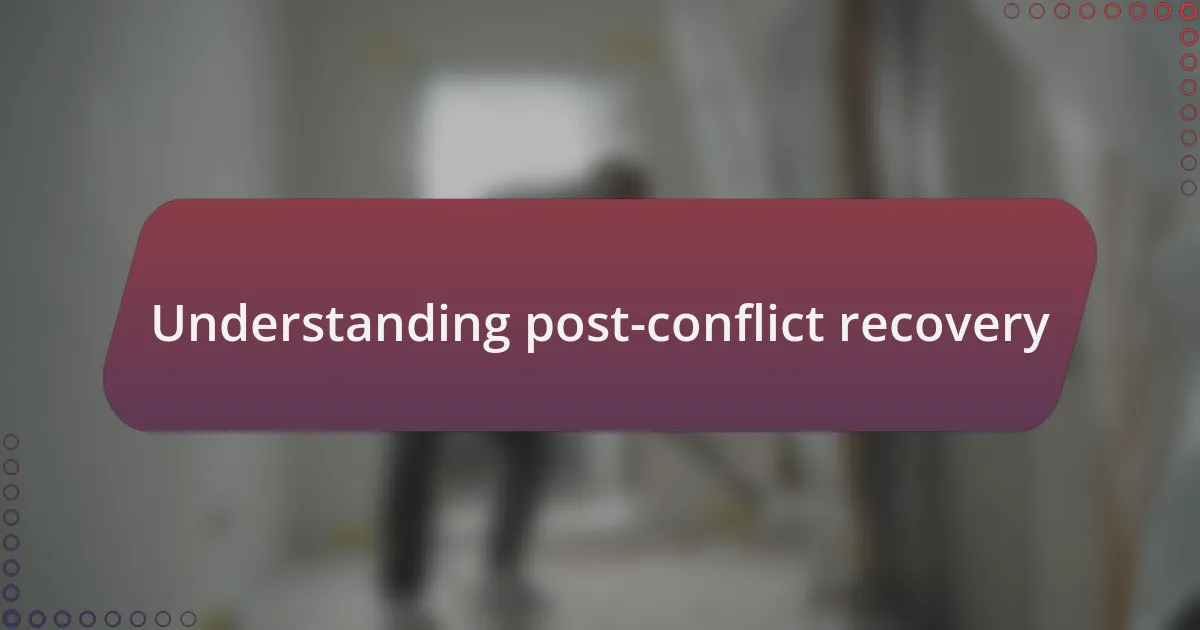
Understanding post-conflict recovery
Post-conflict recovery is not merely about rebuilding physical structures; it’s a profound journey that touches the very essence of community life and individual identity. I remember reflecting on a small town where the scars of war still lingered in the eyes of its people. How do you truly heal when memories of loss are so fresh? It requires a multi-faceted approach that recognizes the deep emotional wounds alongside the need for infrastructure.
Communities often grapple with feelings of mistrust and division long after the fighting stops. Listening to the stories of youth who have lived through conflict can be both heartbreaking and enlightening. Their narratives often reveal a longing for connection and understanding that is vital to fostering peace. Isn’t it crucial to ensure that the young voices are heard in rebuilding their communities?
Moreover, the process of recovery must engage diverse perspectives to be effective. I often found that when former adversaries came together to share their experiences, they discovered common aspirations. Just think about it—how powerful is it for individuals to realize they share similar hopes and fears? This openness can be a catalyst for lasting change and reconciliation, driving the community toward a shared future instead of being anchored in a troubled past.
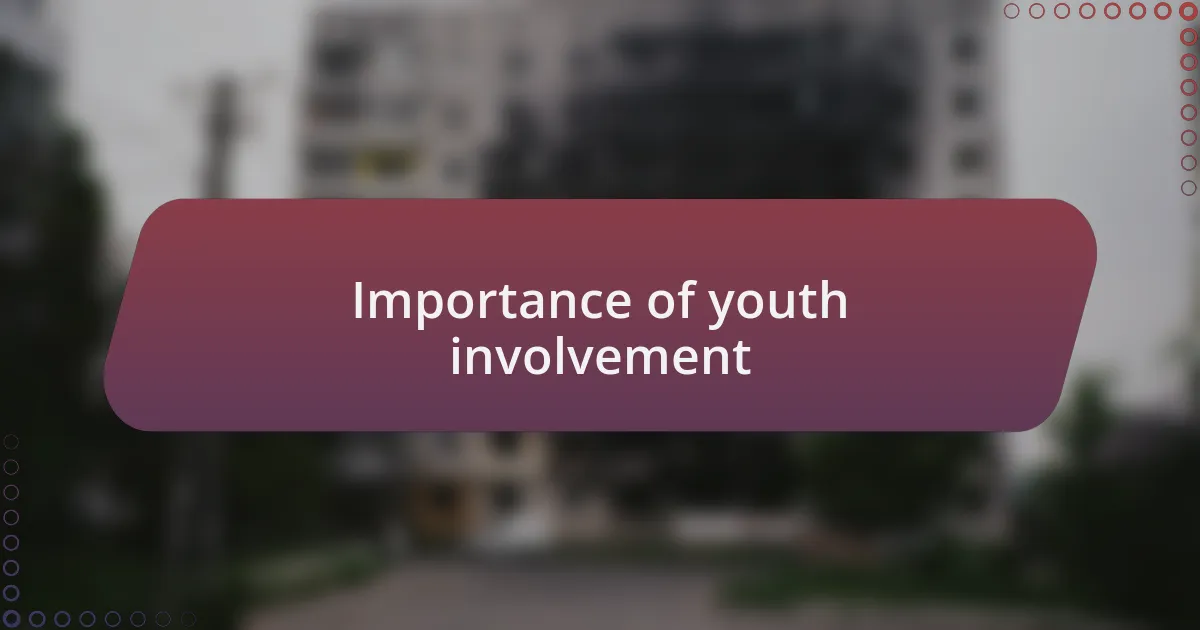
Importance of youth involvement
Involving youth in peace efforts is crucial because they represent the future of any community. I recall attending a peace-building workshop where young participants passionately shared their vision for a harmonious society. Their ideas were refreshingly innovative, demonstrating that youth not only dream of peace but also possess the enthusiasm and creativity to shape it.
Youth bring energy and fresh perspectives to post-conflict recovery initiatives. They often understand the complexities of their environment better than anyone else because they live it daily. Imagine a community where the voices of young people guide reconstruction efforts; it can lead to solutions that are not only sustainable but also deeply rooted in the community’s values and needs.
Moreover, engaging youth fosters a sense of ownership and responsibility towards their environment. I’ve seen young leaders emerge from initiatives focused on conflict resolution, and their transformation is inspiring. Isn’t it empowering to witness youth take charge, ensuring their voices are integral in shaping a peaceful future? Their involvement creates a cycle of hope that reinvigorates entire communities.
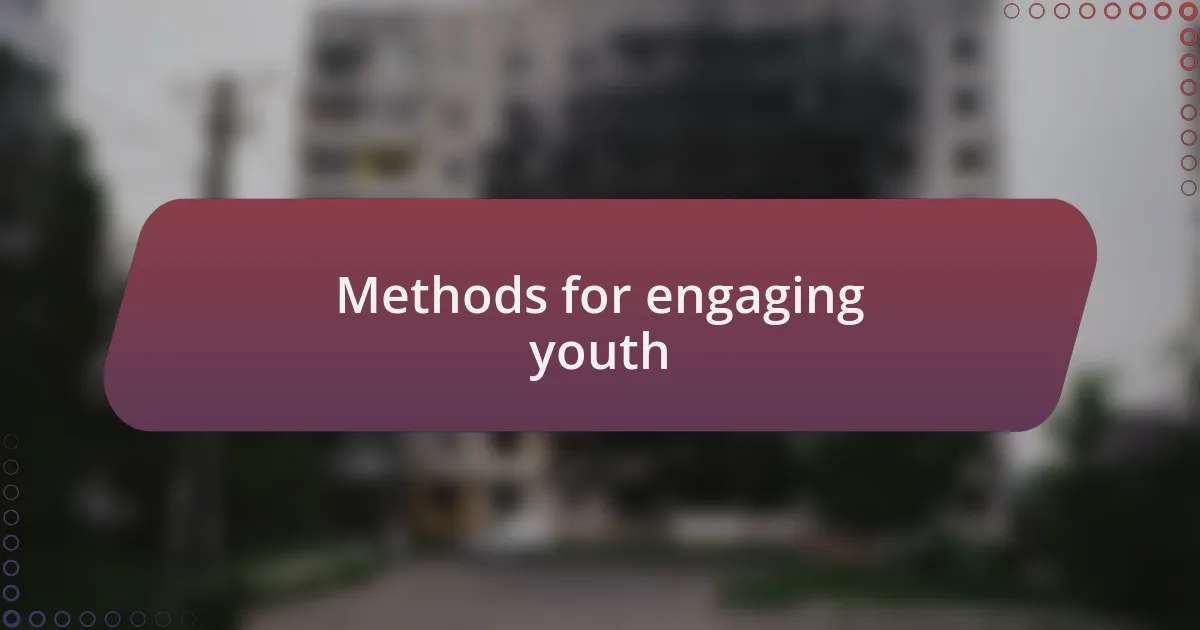
Methods for engaging youth
One effective method for engaging youth is through collaborative art projects. I remember being part of an initiative where young artists created murals that reflected their visions of peace and unity. This not only allowed them to express their emotions but also sparked community conversations around conflict resolution. How powerful is it to see a young person’s artistic expression provoke dialogue that brings people together?
Educational workshops tailored for youth can also be transformative. In one workshop I attended, young participants learned negotiation skills and conflict resolution strategies through role-playing activities. This hands-on approach not only made learning fun but also equipped them with the tools to address real-life situations. Have you ever seen the confidence in a young person grow as they practice these essential skills? It’s truly uplifting.
Additionally, using social media platforms to amplify youth voices is increasingly relevant in today’s digital age. I often witness young activists mobilizing their peers online, sharing stories that resonate with their experiences in conflict-affected areas. It’s fascinating how a simple tweet can inspire action and connection among youth across continents. Isn’t it incredible to think about how technology can bridge gaps and encourage dialogue for peace?
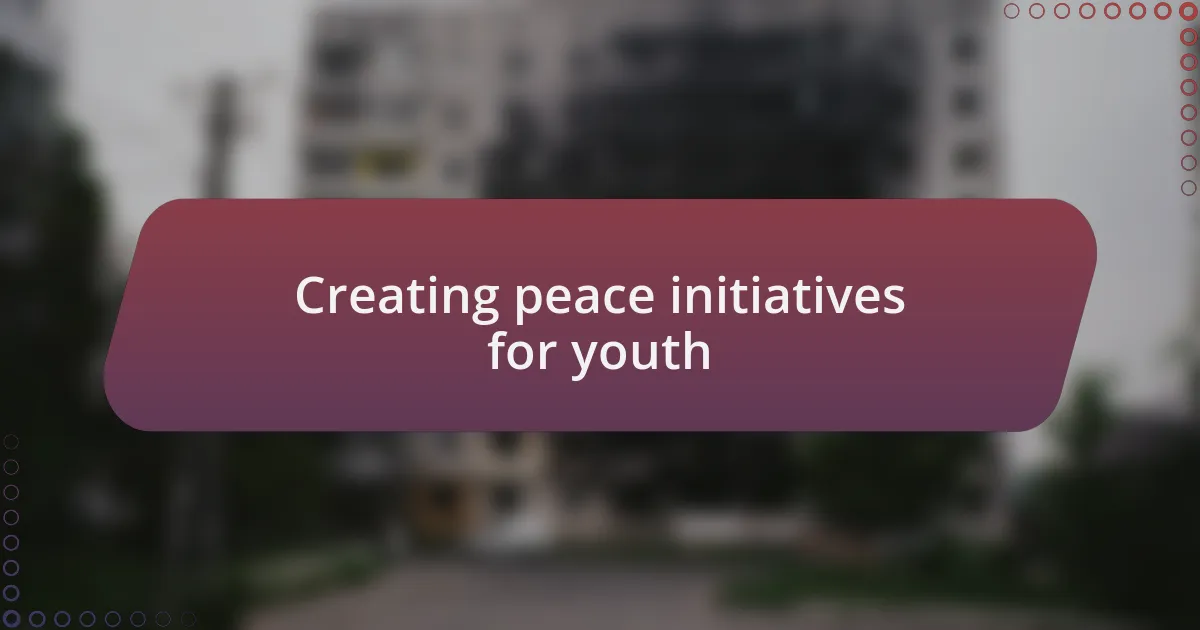
Creating peace initiatives for youth
Creating peace initiatives for youth should start with their unique perspectives. In one initiative I was involved with, we held community forums where young people could voice their ideas on fostering peace. I was genuinely moved by the depth and creativity of their suggestions; it reminded me that youth often have a fresh outlook that adults might overlook. Have you ever listened to a young person articulate their vision for the future? It can be eye-opening.
Moreover, mentorship programs can play a crucial role in shaping youth-led peace initiatives. I once had the privilege of guiding a group of teenagers through a project that aimed to create safe spaces for dialogue in their schools. Watching them emerge as leaders, confident in their ability to drive change, filled me with hope. Isn’t it inspiring to think about how a supportive adult can ignite the potential within a young person?
Lastly, integrating youth in decision-making processes is vital. I recall a local government initiative where a committee included young representatives to focus on peace-building measures. Their input led to actionable solutions that resonated with their peers. It made me realize how essential it is to empower youth not just as participants, but as decision-makers in the peace process. Do you think we underestimate their capability to influence meaningful change?
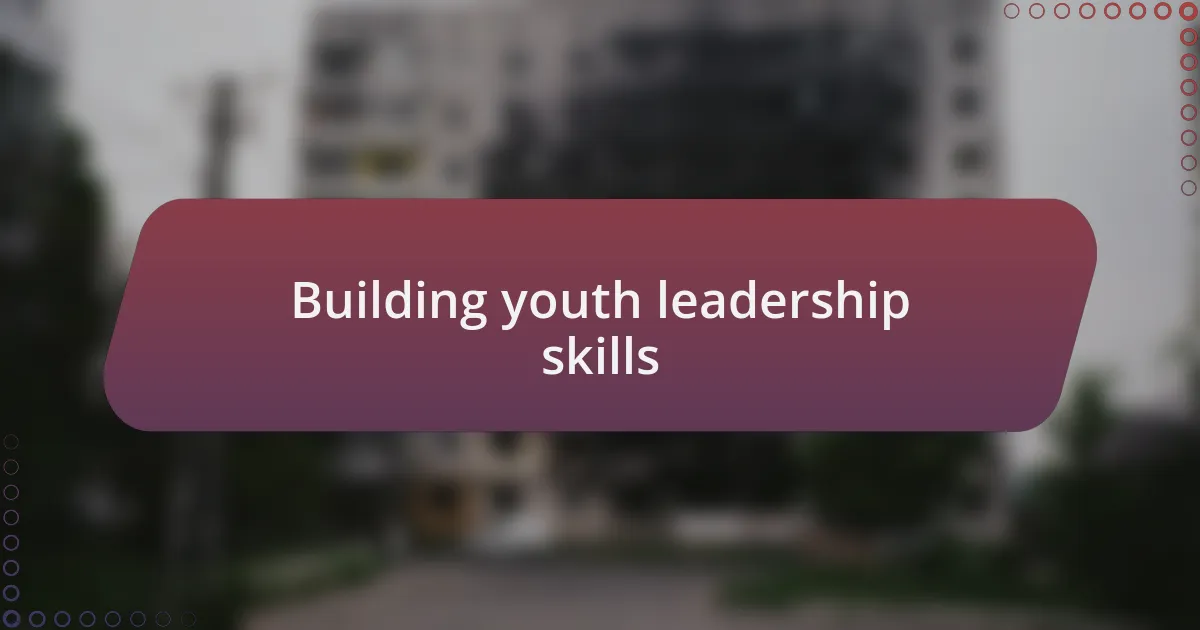
Building youth leadership skills
Building youth leadership skills is essential in empowering young people to take ownership of peace efforts. I vividly recall a workshop I facilitated where participants designed their own community service projects. Seeing them present their ideas with such passion made me understand that when youth are given the tools and space to lead, they excel in ways we often don’t anticipate. Have you ever watched someone find their voice for the first time? It’s a transformational experience.
Another approach I’ve found effective is involving youth in peer mentorship roles. I once observed a group of high school students mentor younger children in conflict resolution strategies. The way they embraced their new responsibilities surprised me, showcasing not only their leadership potential but also reinforcing their own learning. Isn’t it remarkable how teaching others can solidify one’s own understanding and skill set?
Finally, creating opportunities for youth to participate in real-world decision-making can elevate their leadership capabilities. In one initiative, I watched as young people influenced local policy discussions regarding safety in their neighborhoods. The pride they felt in being heard and respected was palpable, and it struck me that we need to create more of these avenues for them. Isn’t it time we tap into their potential as catalysts for change?

Measuring impact of youth engagement
When measuring the impact of youth engagement in peace efforts, it’s crucial to consider both qualitative and quantitative metrics. For instance, during a community peace forum I attended, we implemented surveys to gauge changes in attitudes towards conflict resolution among participants. The shift in perspectives was remarkable; it made me realize just how powerful young voices can be when they feel they truly belong in the dialogue. Have you ever experienced a moment where feedback completely changed your understanding of a program’s effectiveness?
Another technique I’ve found beneficial is storytelling. In a recent project, I encouraged young participants to share their journeys through art and personal testimonies. This not only helped in reflecting the emotional depth of their experiences but also provided insight into how their newly acquired skills positively impacted their communities. Watching them connect through their stories was nothing short of inspiring—what better way to measure impact than through the heartfelt narratives of those involved?
Additionally, tracking long-term commitments can reveal the depth of youth engagement. After launching an initiative focused on peer-led workshops in my area, we followed up with participants a year later. To my surprise, many had continued their involvement in various forms, demonstrating sustained interest and passion for peacebuilding. Isn’t it fascinating how the seeds we plant today can yield unexpected growth in the future?

Sharing personal success stories
Sharing personal success stories can be a transformative way to engage youth in peace efforts. I recall a young woman named Fatima, who opened up about her experience of loss in a conflict. Her story resonated deeply with others, showcasing the real emotional stakes of peacebuilding. It made me wonder: how many voices are amplified when we create spaces for sharing such powerful narratives?
One success story that stands out to me is from a youth-led initiative where participants collaborated to document their experiences through a podcast. Hearing young people narrate their struggles and triumphs highlighted their resilience in the face of adversity. I was struck by how these narratives not only inspired the storytellers but also sparked conversations among their peers about the importance of unity and understanding. Could it be that sharing these stories could unify divergent perspectives in profound ways?
Moreover, I’ve seen how sharing stories catalyzes action. During a workshop, a participant shared how she turned her painful experience into a campaign advocating for peace in schools. Witnessing her transformation moved everyone in the room, prompting many to commit to similar initiatives. It’s incredible how one person’s journey can ignite a collective passion for peace—what if we all took a moment to share our experiences?